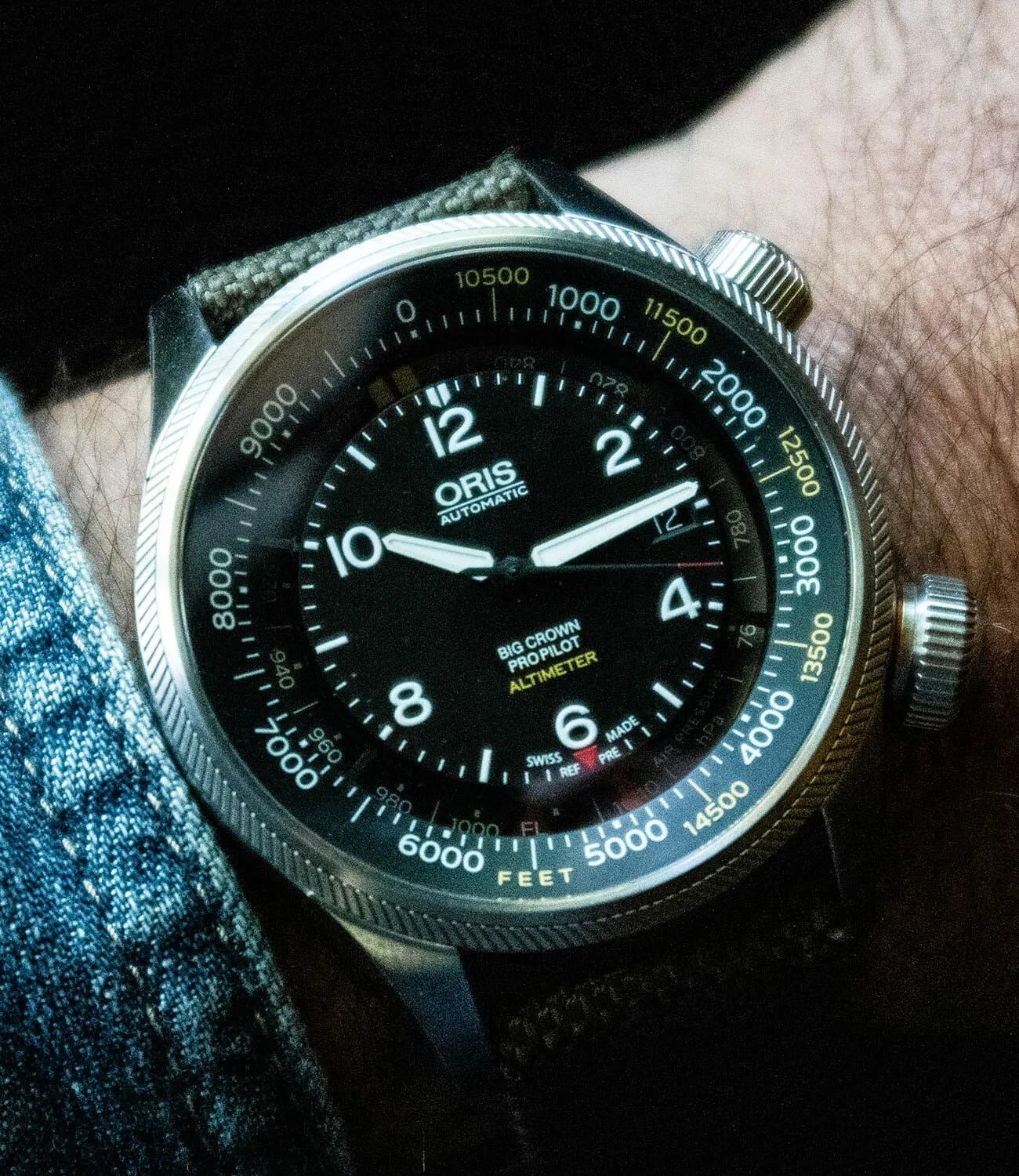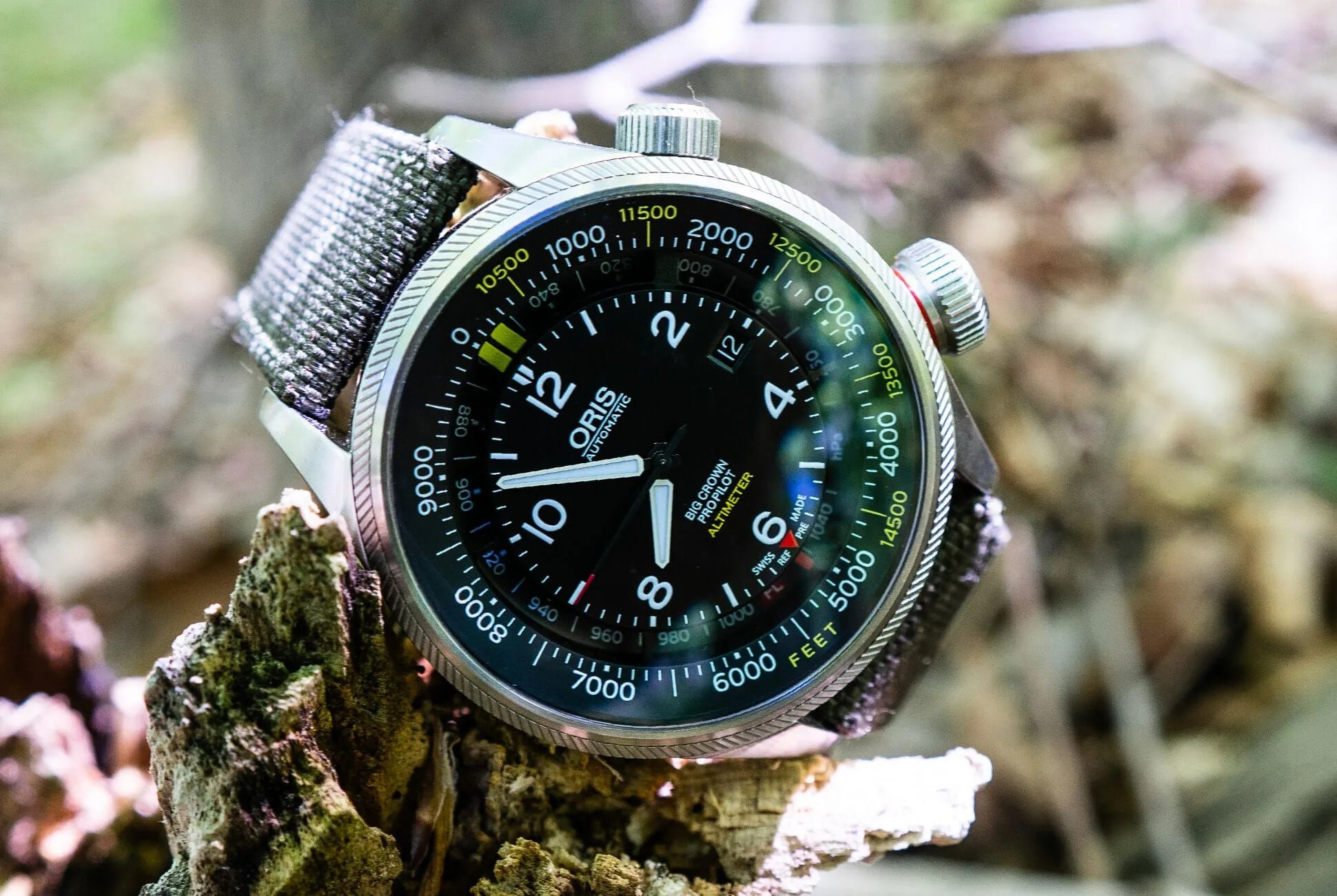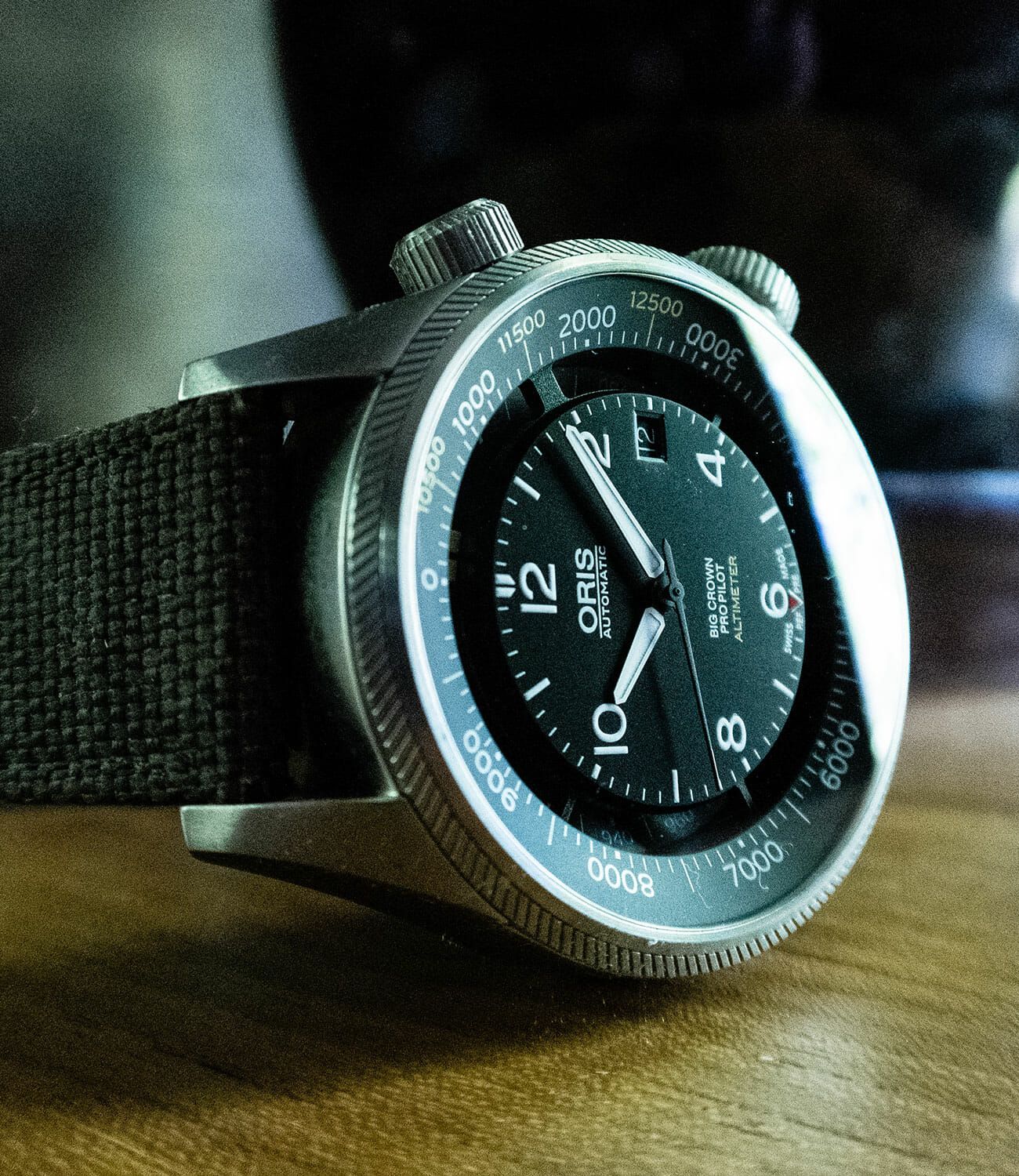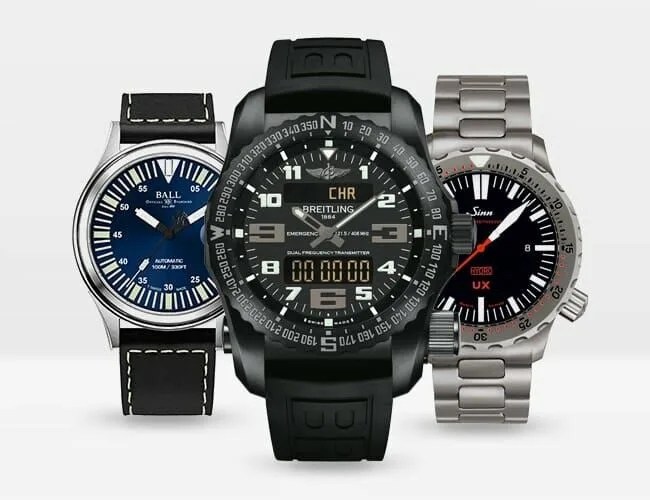It’s hard to believe that in 2016 Oris was the only the second watchmaker to offer a mechanical altimeter in a wrist watch. The first was a Breva model costing over $100,000, while the Oris, in characteristic form, retails for $3,800. Cutting-edge materials like carbon fiber and specialized alloys have allowed for the miniaturization of the highly sensitive internal barometer mechanism, which also manifests itself in the form of an altimeter by scaling its tiny fluctuations onto a legible calibrated scale around the dial. The scale on the Oris Altimeter I tested was in feet, though it is also available in meters.
While GPS can use existing data to give the user an altitude reading based on location, a true altimeter must measure changes in barometric pressure. However, there’s no getting around the need to calibrate an altimeter (digital or mechanical) to a known altitude before ascending or descending in order to get a reading. Complicating matters further, weather changes can swiftly upset this calibration.
Nonetheless, if you’re wandering away from cellphone and/or GPS reception, or from battery charging capabilities, a mechanical altimeter is a helpful tool for tracking vertical ups and downs, and also weather. In extreme instances — like backcountry skiing expeditions — meaningful weather predictions and a sense of how high up you are can be life-saving.

I experienced some atmospheric fickleness while skiing at Vail in Colorado with the Oris Pro-Pilot Altimeter. The Rockies are famous for fast changes in weather, and I struggled at times to keep the watch calibrated throughout a full day of skiing (note that the same goes for the Casio Pro-Trek smartwatch I was also testing). Yet, Vail provided an ideal environment for testing the altimeter, as I was bouncing between 8,120’ of altitude at the base and 11,570’ at the peak. Once calibrated, the altimeter checked out accurately against the smartphone apps my friends and family on Vail’s Ski Patrol use.
As you might expect, this is a big watch. At 47mm across and 17mm thick, we’re talking huge. However, like most larger Oris pilot watches, the Pro Pilot Altimeter wears surprisingly well, and I was actually happy to have the bulk of it pushing my ski glove and jacket cuff aside so I could read it without fussing. It’s also a heavy watch, but if you can’t hack a weighty watch, then perhaps you shouldn’t be doing things that call for altimeter readings.
This watch is, cleverly, quite easy to use. The crown at 2-o’clock adjusts the time and date in two positions, and the crown at 4-o’clock sets the altimeter. That second crown has three positions: in the screwed-in position, you get 100m of water resistance, but the altimeter can’t function; when unscrewed, the watch has diminished water resistance, but the altimeter functions; in the fully pulled out position, you can calibrate the yellow altimeter marker to your known altitude.


